Stronghold: Warlords review | PC Gamer - smithyouslovis
Our Verdict
A unobjectionable if generic scheme game that lacks the big personality and siegecraft of in the first place entries.
PC Gamer Finding of fact
A decent if generic strategy game that lacks the Brobdingnagian personality and siegecraft of earlier entries.
Need to know
What is it? Free-base-construction echt-clock time strategy game set in the Far East.
Expect to pay £27/$36
Developer Firefly Studios
Publisher Firefly Studios
Reviewed on AMD Ryzen 7 5800X, Radeon 5700XT, 16GB RAM
Multiplayer? Online co-op and PvP
Link Constituted site
The original Stronghold holds a special place in my meat. You build a medieval barony, wall IT with a labyrinth of unclimbable walls, and stave off waves of attackers while keeping the serfs living within happy, intimately fed and well taxed. It had real character too, with a lovely soundtrack, snappy unit soundbites and memorable villains.
I tend to think that the serial' decades-time-consuming endurance despite often halfhearted instrumentalist and critical reception speaks to an enduring go for that it uncomparable day goes back to that simple principle of building and protecting your castle against relentless waves of attackers—that maybe the next Fastness will finally Be the ane to both take us stake and move US onward.
Stronghold: Warlords isn't that game. In fact, it's the most sprawling entry in the series yet—largely abandoning the rationale of building a feudal gantlet for waves of enemies in favor of a much traditional RTS setup featuring larger maps and symmetrically placed enemy bases. In other words, IT's more Historic period of Empires than Stronghold, merely without the technological progression, or scouting, or clean-cut factions, or scuffles o'er resources. It's also set in the Far East, where you pick from four humanistic discipline real-life leadership of China, Japan, Vietnam War and Mongolia.
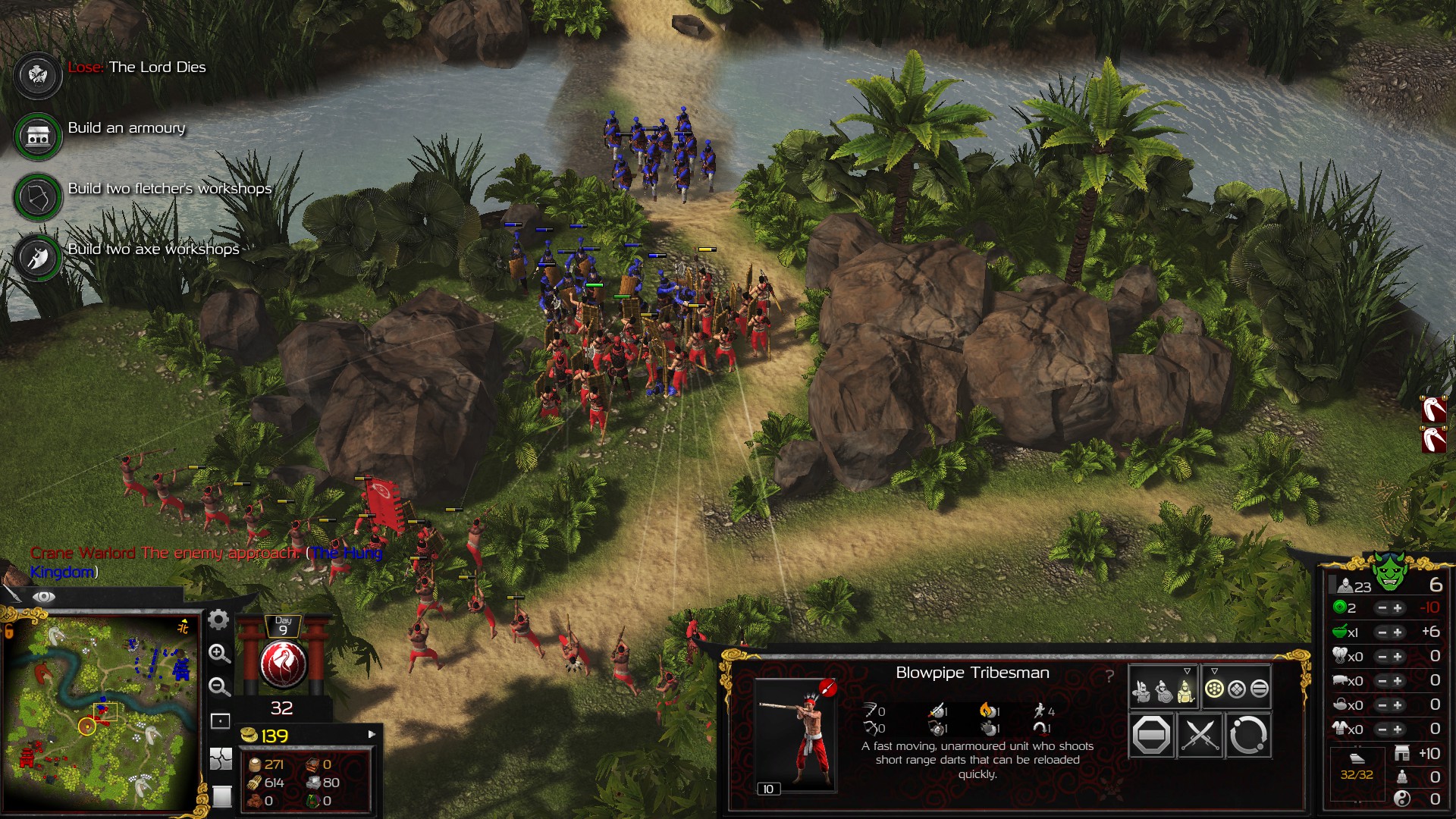
The appellative Warlords system is the twist here. 'tween your base and the enemy's, there are several smaller estates on the mapping held away neutral warlords. Defeat these warlords, and they'll join your side, sending you resources, letting your troops tax shelter in their mini-forts, and even launching attacks on your enemies.
It's a decent idea in essence but falters on a couple of levels. Firstly, it means that your main keep which you so meticulously bolster with walls, ballistas, towers, secret powder traps and fire arrow launchers doesn't see a ton of carry through. Most of your time in a skirmish will be spent scuffling over these warlord forts that you don't have any hand in building or designing take out for preset upgrades that you corrupt with diplomacy points. The climactic sieges do bump eventually, but they're non at the heart of the game like they used to be.
You posterior use diplomacy points to sweet-talk warlords to your side instead of fighting them. I found that once I was deep-water into a game, with each remaining team having piled up these points, I'd get embroiled in an endless lug of war on the diplomacy screen with the warlords endlessly riffle-flopping 'tween my team and an enemy's. The diplomacy is some simplistic and fiddly, and the last thing I deficiency to equal doing while defending on cardinal front and besieging on another is clicking a big button along a menu to make a number burn down.
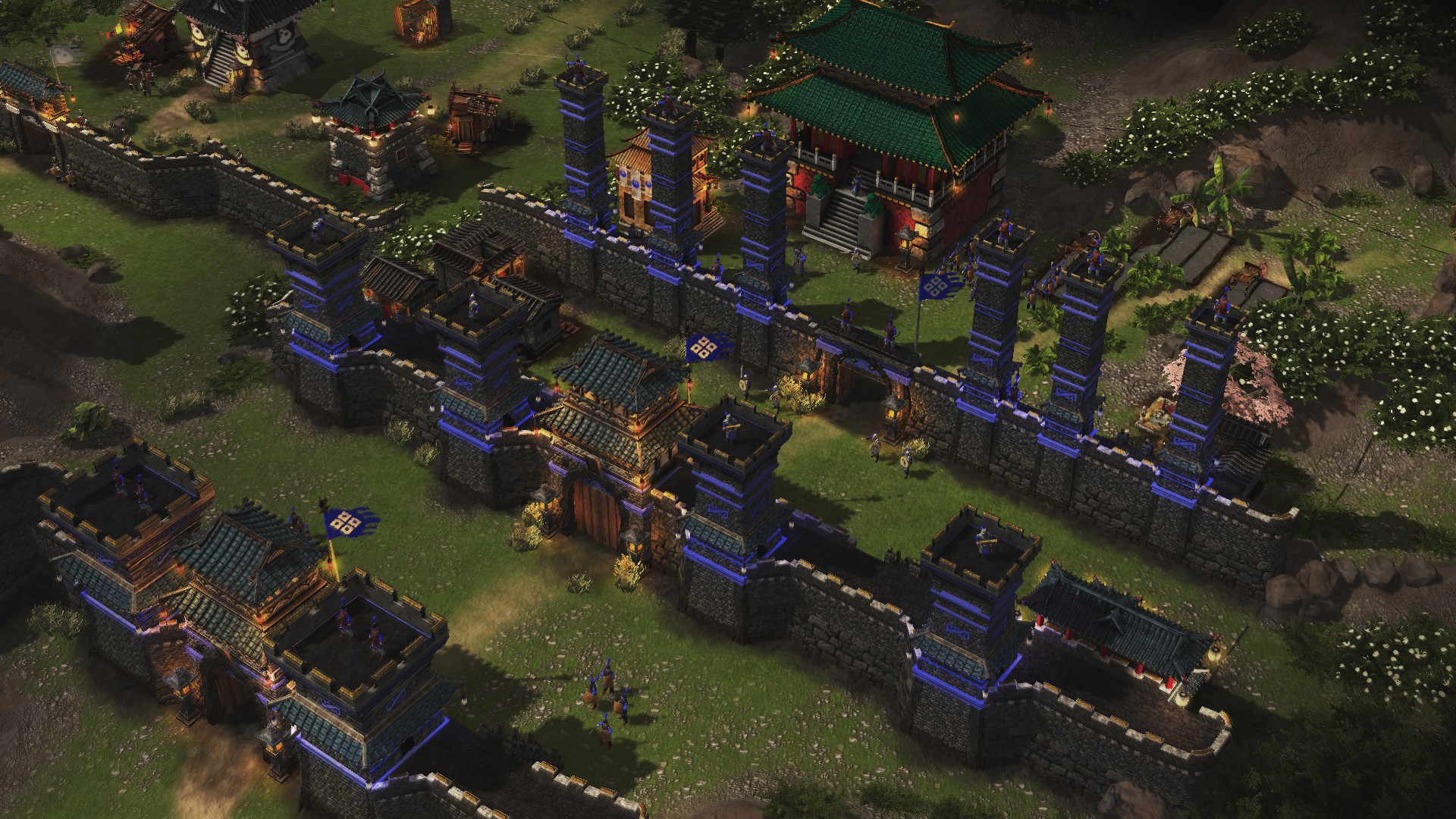
The combat itself feels good largely. Siege equipment is varied, ranging from trebuchets that can fire not lonesome rocks, but discharge and diseased animals into enemy forts, to laddermen and mantlets that protect your incoming troops from the inevitable arrow barrages. Seeing a city sting and delapidate before funnelling troops into IT is still a joy, and I had a few highlight reel moments with the gunpowder-loaded cows that I'd forward kamikaze Death-runs into poorly guarded siege equipment.
Regularized melee, cavalry and ranged troops are joined away far Asian classics like samurai, warrior monks, horse archers and ninjas—who derriere scale walls without ladders. Burn down lancers in the meantime, can burn entire regiments with their medieval flamethrowers. These pyromaniacs shriek maniacally when you take them, making you question whether the least mentally stable soldiers should beryllium wielding the only weapons also capable of damaging your own soldiery. Information technology's a solid lineup, oblation more tactical variety than past iterations while retaining more or less of the whimsy that the serial publication at its best had.
Back on the homefront, you'll need to keep the people riant with food, clothing, tea and temples if you want to crank up those taxes. It's exotic that you force out lone gather resources from within the rather limited construction boundaries of your solitary hold open, as it means that you need to procure most of your resources done warlords under your command or the market, where you can grease one's palms and sell all goods in the lame. That substance no warring over resources on the map, which makes games that bit fewer strategic.
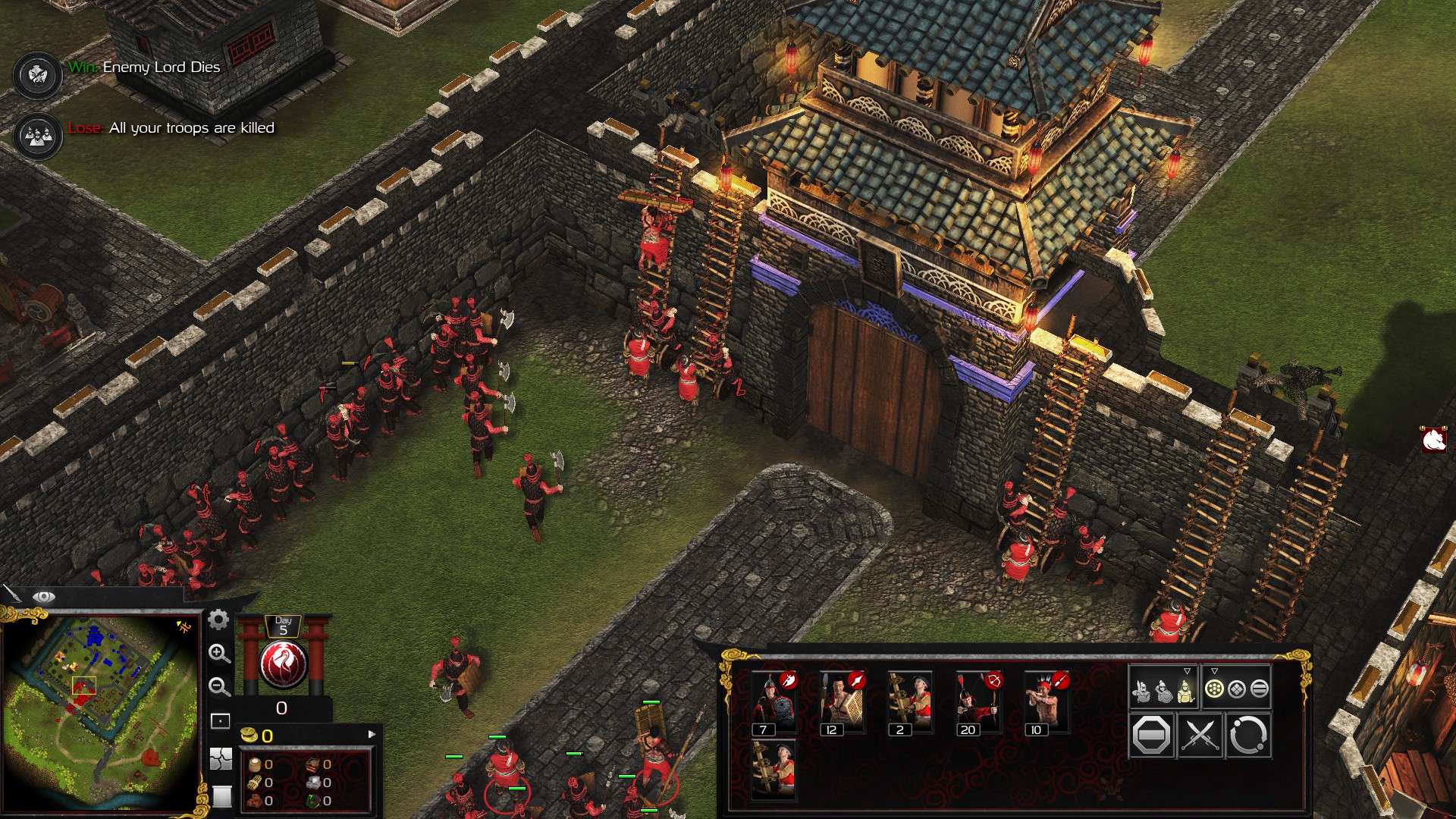
Despite the dentition unwieldiness, I did take into a groove with this economic system, setting nimiety resources to automobile-sell once they hit a certain point while auto-buying those I lacked indeed that they ever stayed at a minimum brink.
The campaigns fall for that RTS yap of serving as expanded and often mundane tutorials
You can choose whether you're a popular ruler or a feared one through buildings—a theatre on the one hand; national torturing equipment on the other. Apiece glide path grants its own bonuses, and rounds hit a pretty satisfying city-builder component that's a pleasure to watch when running efficiently. Bos taurus carry iron from mine to stockpile, farmers work the fields, and little people scurry between shacks and pagodas illuminated by ambery hanging lanterns, offering soundbites on the state of things when you tick them (so usually whining about taxes, in my case). Managing and artful your fiefdom was always a strongpoint of the series, and Warlords upholds that tradition.
It's taken a while to get round to talking virtually the campaigns, which to be sure will be on the minds of those who remember the original game's unravel of medieval music hall villains (medievaudevillains, if you will) and kooky cutscenes. But really in that location's not much to tell here, with the campaigns falling for that RTS trap of serving as expanded and often mundane tutorials for the main events: encounter mode and multiplayer.
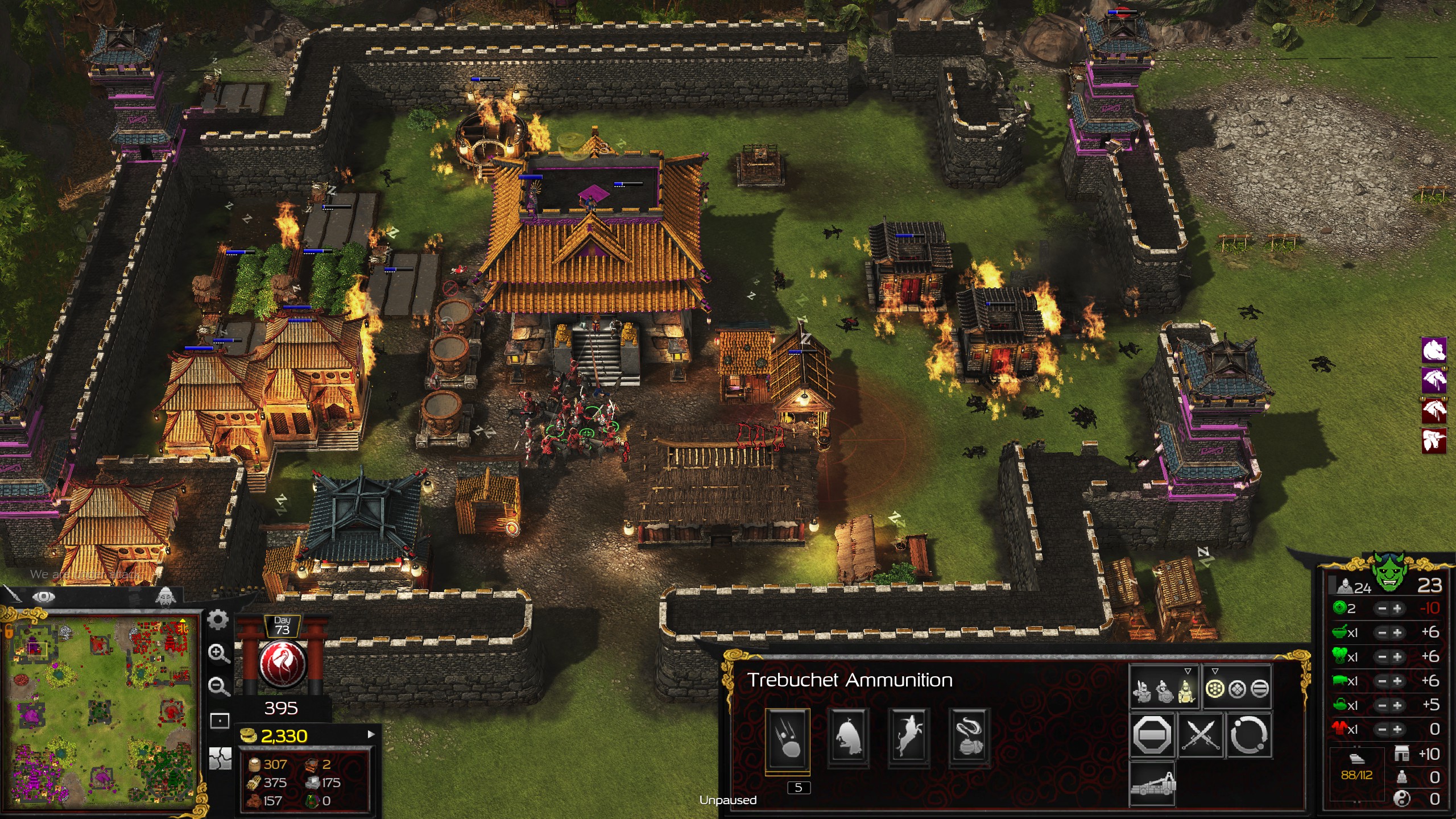
There are five reasonably lengthy campaigns set across east Asia, each casting you A a real-life historical swayer of the respective region. To each one uncomparable has a slightly different angle—from galloping around the plains of Mongolia as Genghis Caravansary to Thuc Phan's quest to become king of the AU Lac kingdom in the jungles of modern-day Vietnam.
There's plenty of hours here simply not a good deal meat—no cutscenes, no more big personalities to pit yourself against, and no mid-commission twists. The faction leaders and their rivals are avatars more than characters, only rarely pop heavenward in the recession of the screen to grimace and scowl at you.
The crusade missions oftentimes restrict the units and buildings you can use, forcing you to really try and make the most of limited resources. These restrictions also give the impression that the factions in some manner dally other than from combined another, merely once you start playing skirmish mode—the meat and Elmer Reizenstein of the game—you find that each one is practically the same: identical units and identical buildings except for the bright neon colour striation close to them. Even if IT was the guinea pig that somehow the computer architecture across respective asian nations thousands of miles (and thousands of long time, supported the rulers) apart was identical, it doesn't feel satisfying in a genre that's most interesting when in that location's both asymmetry and distinctions betwixt the combatants.
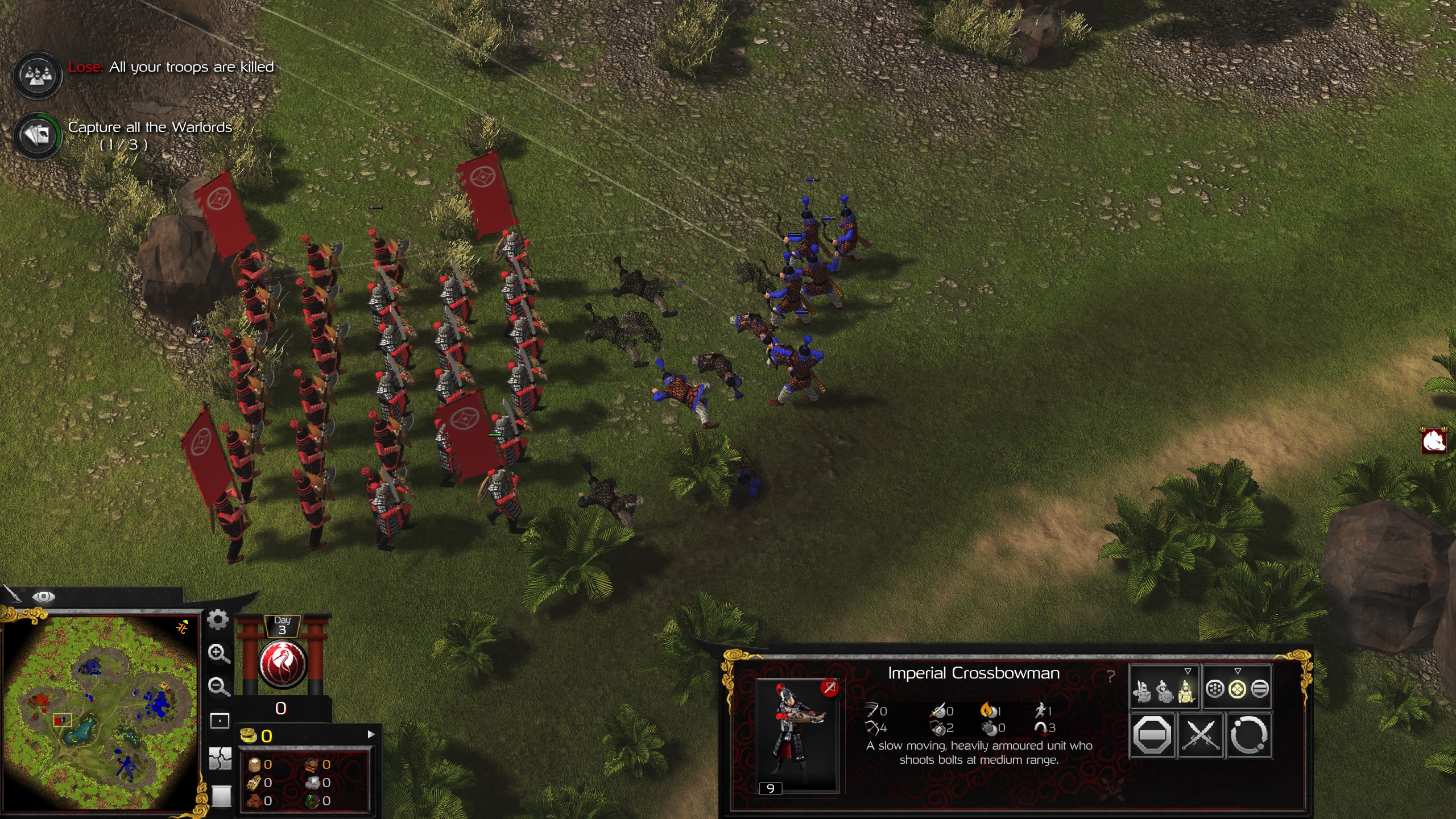
Past leaving behind the safety of its palace walls, Fastness has ventured away into a theatre of operations where Age of Empires still reigns supreme. IT's a rubbery ask, especially when at the time of committal to writing information technology seems that autosave International Relations and Security Network't workings and performance unstable and prone to crashes. Information technology doesn't feel quite a ready for the sympathetic of game IT wants to be.
Stronghold: Warlords still shines during sieges, when piles of enemies collapse beneath swarms of arrows, ladders and ninjas cling to walls, and soldiers fly out of towers toppled aside bricole fire. There's enough customisation in the skirmish mode that you stool manufacture these backbreaking attritional standoffs, but much of the gamey between these feels too thin. I'm still waiting for the day when this series reels things in and builds along its inflexible siegecraft foundations, instead of diluting them with generic RTS trappings and other systems that don't quite click.
Fastness: Warlords
A decent if generic strategy game that lacks the big personality and siegecraft of sooner entries.
Source: https://www.pcgamer.com/stronghold-warlords-review/
Posted by: smithyouslovis.blogspot.com


0 Response to "Stronghold: Warlords review | PC Gamer - smithyouslovis"
Post a Comment